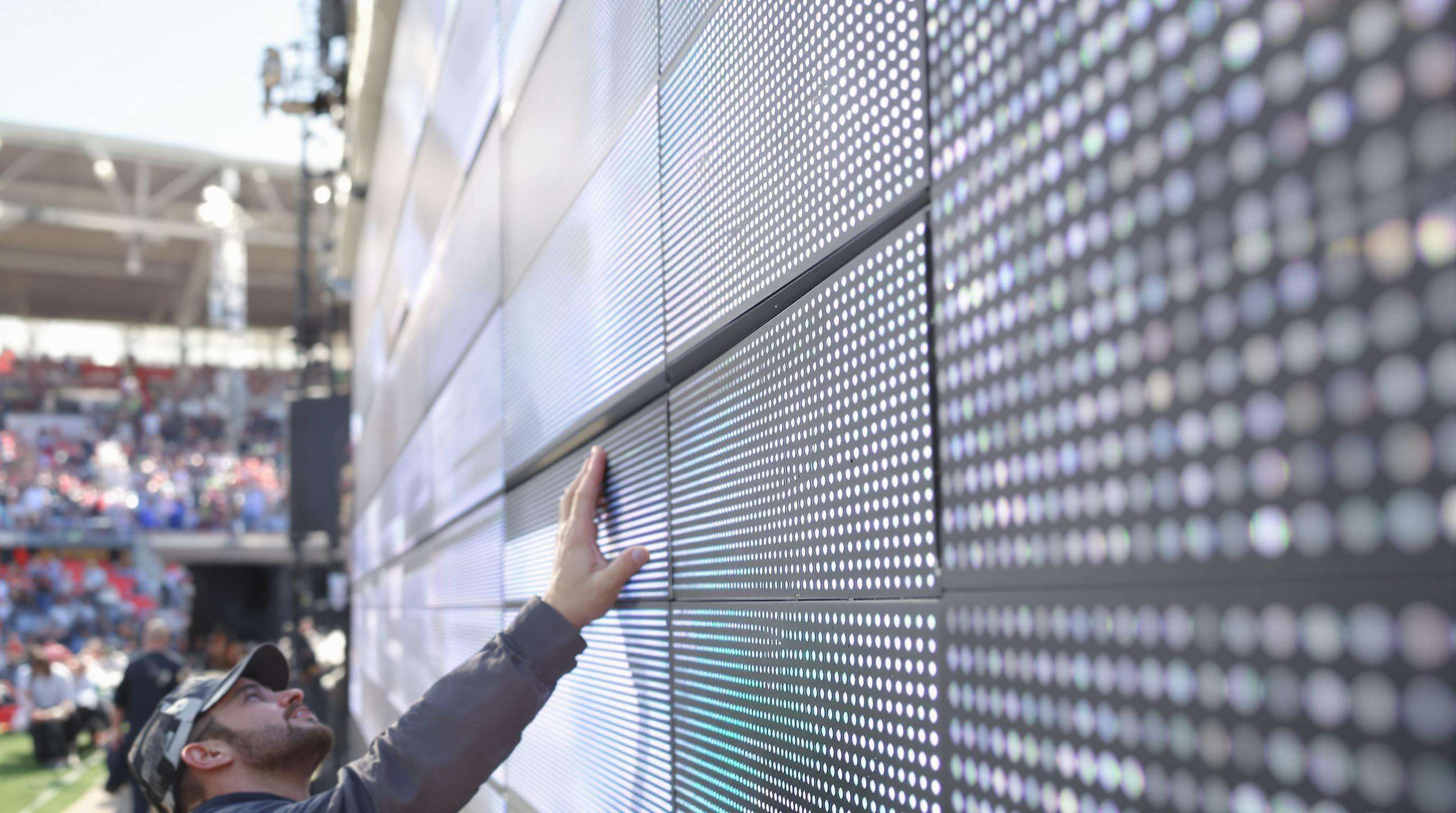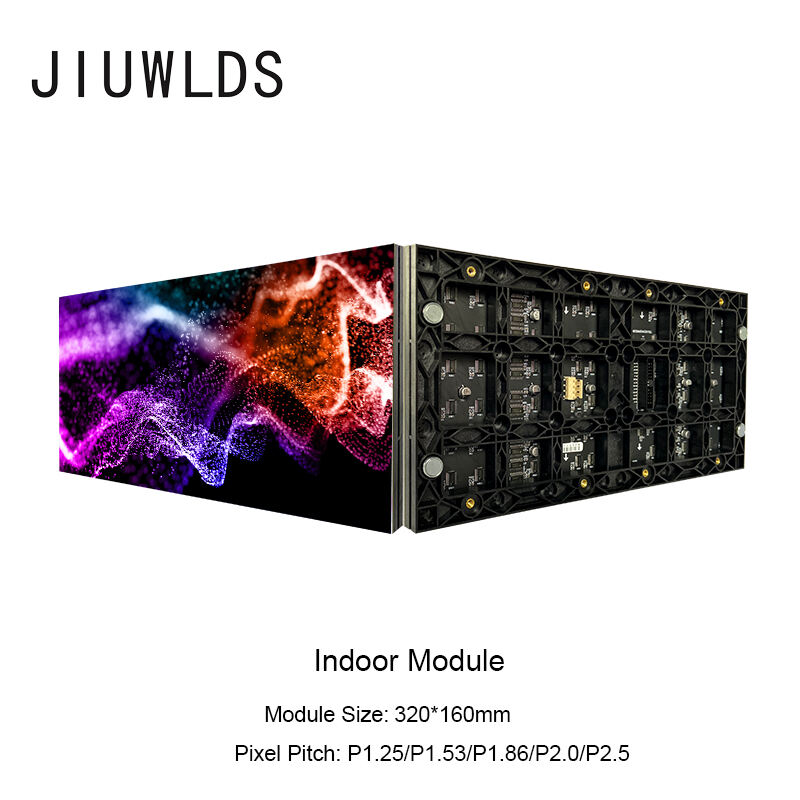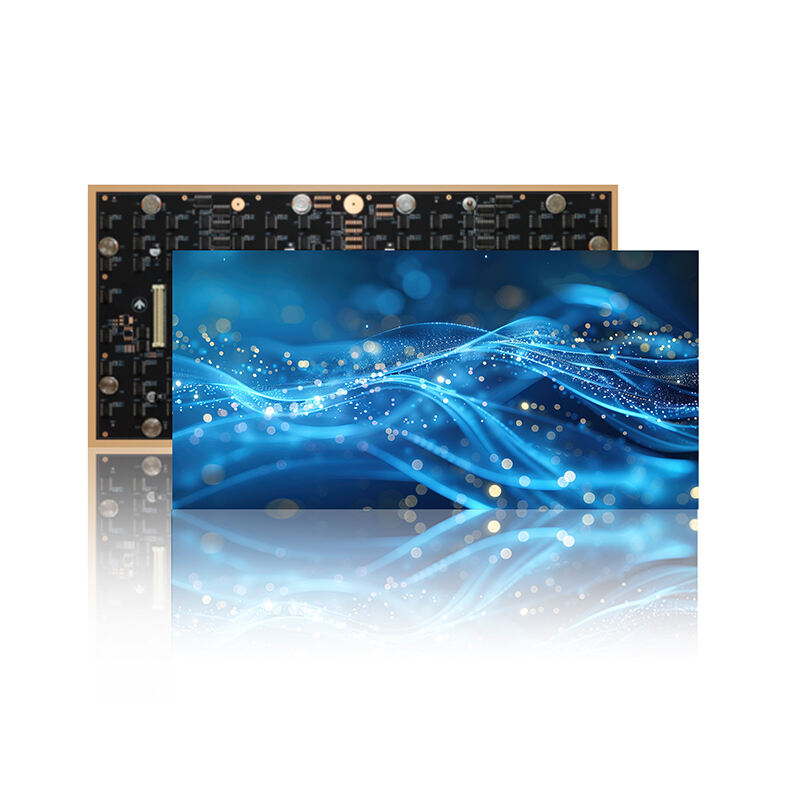How to choose outdoor rental LED screens for events?
Understanding Rental LED Screens: Definition and Key Applications
What Is a Rental LED Wall and How Does It Work in Outdoor Events?
Rental LED walls are basically modular display systems designed for temporary outdoor installations. They combine bright panels with enclosures that can withstand bad weather conditions. The panels fit together pretty well, allowing setups that range from small 10 foot displays all the way up to huge screens big enough for stadiums. Event teams love the plug and play nature of these systems since they can put together something like 500 square feet worth of screen space within just over an hour or so, while still being able to change what appears on screen instantly through media servers. Most models come equipped with internal cooling mechanisms plus housing rated at least IP65, which means they work reliably even when it rains, gets dusty, or temperatures swing wildly. That makes these displays perfect for concerts, sports events, and other occasions where people need large visual presentations outdoors.
How Rental LED Screens Differ from Permanent Installations
The main selling points of rental LED screens are their portability and how fast they can be set up. These screens come with super light carbon fiber frames that weigh anywhere from 30 to 50 percent less than those used in permanent setups. Plus, they have these connectors that don't need tools at all, so putting them together or taking them apart happens really quickly. Fixed installations usually need special mounts made just for them, but rental equipment works differently. Instead, these rentals rely on ground supported trusses or stacking systems that actually handle rough ground pretty well. When it comes to saving power, there's quite a difference too. Take a look at a 10mm pitch rental panel compared to similar fixed displays.
Top Use Cases: Sports, Concerts, and Corporate Events
- Sports: 360° LED rings deliver live replays visible up to 300 meters in stadiums
- Concerts: Curved walls with 5,000+ nits brightness ensure visibility at daylight festivals
- Corporate Events: Ultrafine 2.5mm pitch screens provide crisp backdrops for product launches and keynotes
At a recent international tech summit, 8K rental LED screens powered interactive demo zones, achieving 92% attendee engagement—a 34% improvement over traditional projection.
Essential Technical Specifications for Outdoor Rental LED Screens

Brightness (Nits): Indoor vs. Outdoor Requirements and Daylight Visibility
For outdoor rental LED screens to be seen clearly under bright sunlight, they generally need around 5000 nits of brightness, which is roughly three times what's required inside buildings. The top quality units actually go beyond this standard, using special dual layer diode technology that maintains 5500 nits while still providing good visibility across a wide 170 degree angle. Recent field testing conducted throughout 2023 revealed something important though: any screen operating below 4500 nits loses about two thirds of its visibility when exposed to full sunlight. This means brightness isn't just nice to have but absolutely essential for successful daytime events where audiences might be sitting in direct sun exposure.
Refresh Rate, Color Accuracy, and Power Efficiency
Modern outdoor rental LEDs feature 3840Hz refresh rates and 20-bit color processing to eliminate motion blur during live sports or fast-moving visuals. Energy-efficient drivers reduce power consumption to 180W/m²—40% lower than 2019 benchmarks (EnergyStar 2023)—while advanced thermal systems maintain performance in temperatures from -22°F to 122°F.
Weather Resistance and Durability: Why IP65 Rating Is Critical

When organizing outdoor events, rental LED screens face all sorts of challenges like dust buildup, unexpected rain showers, and temperature extremes that can reach scorching highs or freezing lows. That's why weather resistance becomes so important for these displays. The IP65 rating basically means the screen is sealed against dust particles and can handle light water spray coming at it from pretty much any angle. This kind of protection stops problems like internal component damage, washed out colors, or total system crashes. Event organizers know all too well what happens when screens fail right in the middle of a presentation or concert – expensive repairs and ruined experiences for everyone involved.
Outdoor Challenges: Dust, Rain, and Temperature Extremes
LED rental screens have to deal with all sorts of environmental headaches. Dust gets into cooling systems and causes problems, heavy rains can damage sensitive electronics, and constant temperature changes mess with screen brightness. Things get even worse at coastal venues where salty air speeds up rust formation on metal parts. In desert locations, fine sand particles work their way through gaps and eventually ruin individual pixels over time. That's why manufacturers specify materials like marine grade aluminum frames and high quality silicone seals when building outdoor displays. These components stand up better against the elements, which means fewer breakdowns during events and longer lifespan between replacements for rental companies.
Understanding IP Ratings: What IP65+ Means for Rental LED Screens
IP65 means something pretty important for equipment used outside. The first number shows complete dust protection, while the second tells us it can handle water sprayed at low pressure from all directions without damage. There are better ratings out there too, like IP66 which handles stronger water streams or even IP67 that works underwater briefly. But for regular outdoor stuff, IP65 is what most people go with these days. Manufacturers usually build screens with IP65 protection by adding extra strong joins between parts and applying special coatings that repel water. These features help displays last longer when they're sitting in the elements for extended periods at concerts, construction sites, or anywhere else weather might be a concern.
Real-World Example: Weatherproof LED Walls at a Major Music Festival
During a recent three day music festival in Florida where monsoons are common, the LED walls rated IP65 kept working fine even though they got hit with about 2.3 inches of rain. The sealed panels stopped water from getting inside, while the system's thermal management kept colors looking good despite the 90% humidity levels. No shows had to be canceled or postponed because of equipment failure, which really shows why investing in weather proof rental gear pays off when organizing outdoor events.
Structural Design and Setup Efficiency for Outdoor Events
Modular, Curved, and Ground-Stackable LED Wall Designs
Modern rental LED systems leverage three design innovations:
- Modular panels (2×2 ft or 500×500 mm) allow rapid scaling from 10㎡ to over 100㎡
- Curved configurations with 5°–30° bend radii enhance immersion in circular venues
- Ground-stackable systems support heights up to 4 meters without rigging, ideal for festival stages
These designs enable 87% of events to adjust screen layouts within one hour of initial setup (2024 Live Event Tech Report).
Transportability, Setup Time, and On-Site Assembly
Aircraft-grade aluminum frames and interlocking connectors reduce trailer space by 40% compared to legacy systems. Professional crews can deploy a 50㎡ rental LED wall in just 90 minutes using:
- Pre-numbered panel "tiles" for fast alignment
- Tool-free locking mechanisms
- Integrated power and data cabling
This streamlined process minimizes labor demands and accelerates event readiness.
Site Assessment and Safety: Ensuring Stable Installation
Before installation, site surveys must evaluate three key stability factors:
| Factor | Outdoor Requirement | Testing Method |
|---|---|---|
| Wind resistance | Up to 65 km/h sustained winds | Anemometer readings + load simulation |
| Ground load capacity | ≥500 kg/m² | Soil density probes |
| Slope tolerance | ≤5° inclination | Laser leveling |
Post-assembly checks include verifying bolt torque (35–40 Nm) and ensuring redundancy in electrical connections to prevent single-point failures.
How to Rent Outdoor LED Screens: Expert Tips from Inquiry to Execution
Step-by-Step Guide to Renting an LED Wall for Your Event
First things first, figure out what kind of event we're talking about here. How big is it going to be? Who will be watching? What sort of content do they need to see? When planning for outdoor events specifically, look for suppliers who can provide those IP65 rated panels. Brightness matters too - aim for around 5000 nits so people can actually read the screens even when the sun is shining bright. Don't forget about all the logistical stuff either. Check when equipment arrives, what kind of space they need to set everything up, where power sources are located, and get hold of that wind load information before finalizing anything. And here's something worth remembering: never skip the technical run through before the actual event day. Nothing beats seeing how the display looks from different angles and making sure everything works properly in real world conditions instead of just relying on specs alone.
Balancing Cost vs. Performance in Premium Rental LED Screens
Screens with higher resolution, say around 2.5mm pixel pitch, definitely look better but come at a price tag that's roughly 20 to 40 percent higher than those standard 5mm plus models. When setting up in big spaces, curved LED walls can really draw people in and create that immersive effect, though they often need special mounting solutions which adds another layer of complexity. When looking at different vendor quotes, don't forget to factor everything in per square meter basis. Things like insurance coverage, installation labor costs, and transportation fees tend to sneak up on folks. Most experienced professionals recommend putting about 60 to 70 percent of the overall AV budget into getting good quality screens, while keeping the rest aside for things like emergency backup power systems and having technicians available onsite during events. This approach has worked well for many event organizers who want both visual impact and reliable performance without breaking the bank.
Choosing a Reliable Rental Provider with On-Site Support
When picking vendors, look for ones who have actually done the job before, not just claimed they can. Check out what others are saying online and see if there are any real world examples from previous outdoor events. The vendor's team should be available around the clock at the event site, ready to tweak equipment as lighting changes throughout the day.These systems typically save between 30 to 50 percent on setup time, which matters when schedules get tight. Don't forget to read those contract details thoroughly. Pay special attention to sections about who covers damages, how cancellations work during bad weather, and what happens if something breaks down suddenly. Getting these points sorted out ahead of time saves headaches later on.
FAQ Section
Q: What is the advantage of using rental LED screens for events?
A: The main advantages are portability, quick setup, and adaptability to different event sizes and environments.
Q: What does the IP65 rating mean for rental LED screens?
A: IP65 indicates that the screens are dust-tight and can withstand water spray, making them ideal for outdoor event usage.
Q: How do rental LED screens compare to permanent installations in terms of energy usage?
A: Rental LED screens are designed to be energy-efficient, using up to 40% less electricity compared to permanent installations.
Q: What factors should I consider when choosing a rental LED screen provider?
A: Consider the provider's experience, on-site support options, reviews from past events, and cost efficiency beyond just the rental price.







 Hot News
Hot News